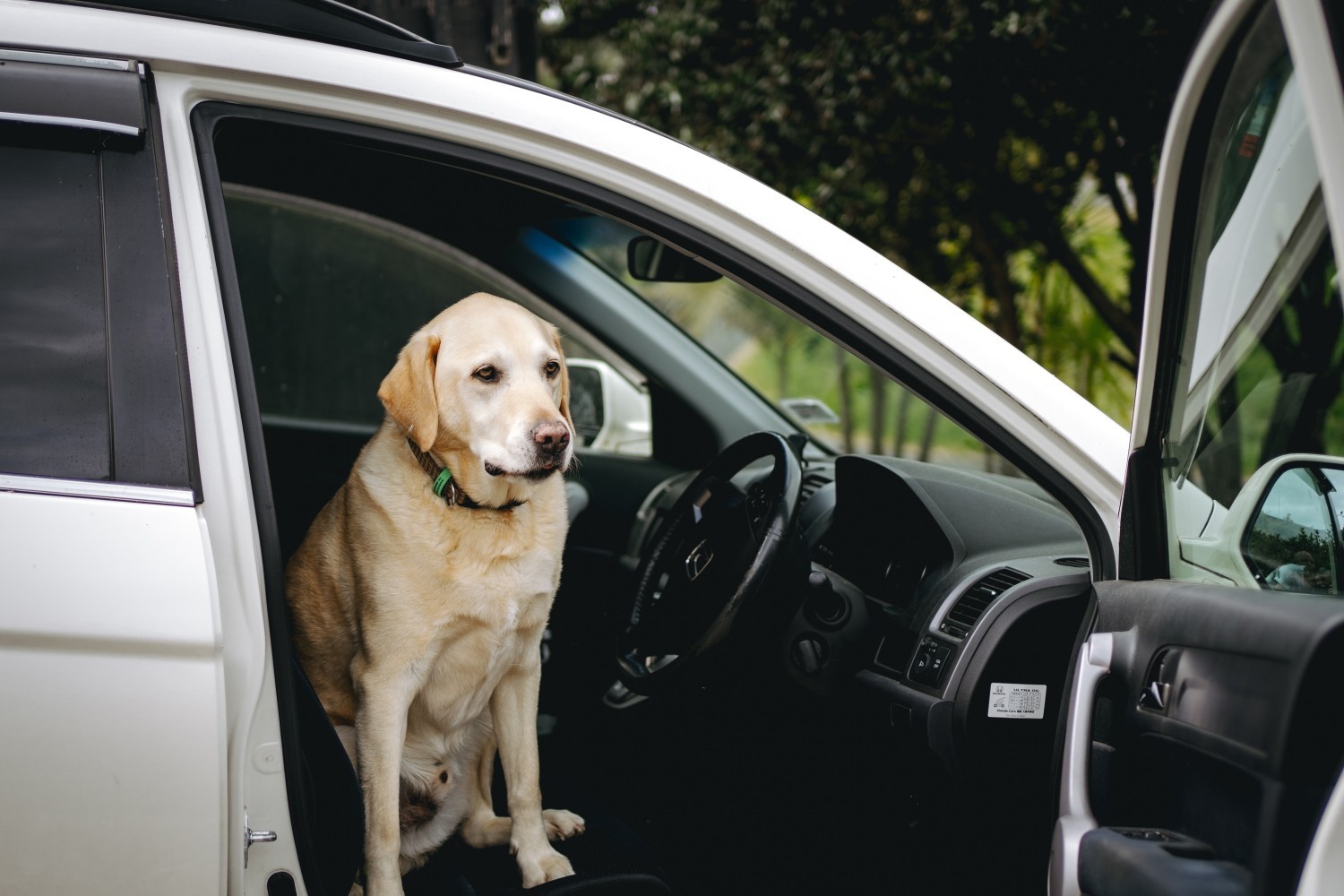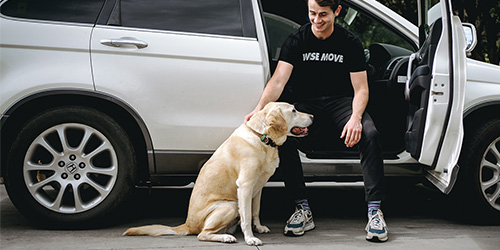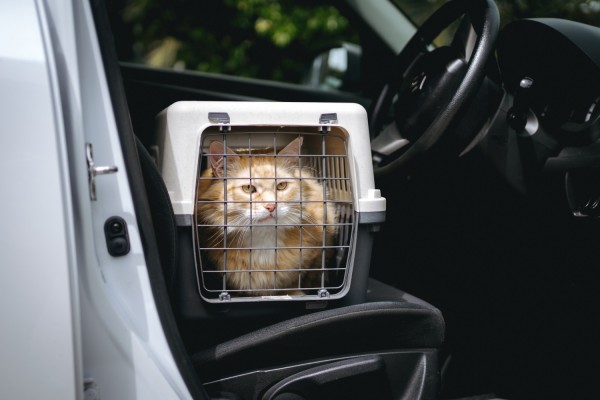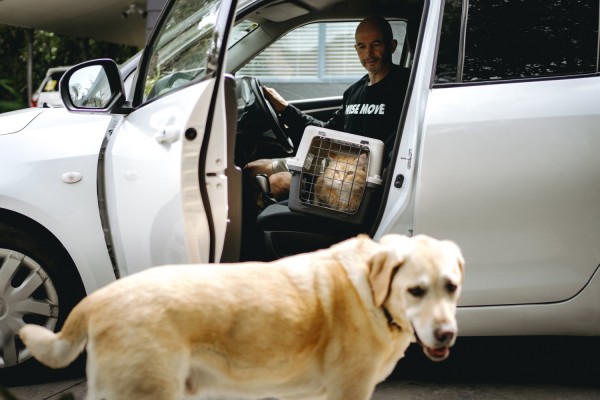Travelling With a Diabetic Dog

Caring for a dog with diabetes can be challenging at the best of times; from administering daily medication to ensuring they stick to a strict diet, looking after a dog with diabetes requires a lot of dedication. So, it’s not surprising that the thought of travelling with their diabetic dog is an intimidating proposition for many owners.
However, sometimes life gets in the way, and travel is unavoidable, whether that be for visiting a loved one or moving to a new house. Factoring in your diabetic dogs’ needs is important, and for many owners leaving their canine companion in someone else’s care or in kennels is not an option, especially given the intense level of care involved.
This article dives into the important things to consider when travelling with a diabetic dog and how to make the journey as smooth and stress-free as possible.
What is diabetes?
Diabetes is a relatively rare disease, affecting up to 1% of dogs at some point during their lifetime. Diabetic dogs are unable to produce enough insulin, an essential hormone involved in regulating blood sugar levels. In simple terms, without insulin, dogs are unable to utilise the energy that they get from their food leading to symptoms such as weight loss and increased hunger. Diabetes can also cause dogs to drink excessively, urinate a lot and suffer from recurring or chronic infections (such as urinary tract infections or skin infections).
Clearly, these symptoms are at the very best an inconvenience to owners and at worst extremely distressing for your dog. Treatment involves supplementation of insulin, administered by an injection under your dogs’ skin, often twice a day. Diabetic dogs are usually also put on a special low-carbohydrate diet to help them regulate their blood sugar levels. But diabetes is a very dynamic disease, which can be affected by even the smallest of external factors – stress is one such factor that can very quickly lead to a diabetic dog becoming unstable. If blood sugar levels remain too high for too long, it can have serious consequences and can even be fatal for your dog.
Why could travelling affect my diabetic dog?
Diabetic dogs need a predictable routine; they are very sensitive to stress, and so any change in their normal day-to-day regime can be problematic. Stress leads to the release of a hormone called cortisol which directly opposes the effects of insulin. This means that in times of high stress, the insulin administered to your diabetic dog may have little effect, resulting in high blood sugar levels and poor control of the disease. The symptoms of diabetes could start creeping back; this could have serious consequences if left unchecked.
Travelling can be very stressful for dogs, and even the smoothest of journeys can have a big impact on how well your dog’s diabetes is controlled. Therefore, it’s vital owners understand the effects that travelling could have on their diabetic dog and what they can do to minimise stress.
When should I not travel with my diabetic dog?
Before we cover the dos and don’ts of travelling with a diabetic dog, it’s important to discuss the situations where it may be best to avoid travelling altogether. Diabetes is a serious disease, and dogs can very quickly go downhill - no matter how important a journey is, it’s not worth taking your diabetic dog with you if it could end fatally for them. There may also be some forms of transport that are just not compatible with a diabetic dog. Long-haul flights, for example, maybe a bad idea; the stress of being in the hold on an aeroplane for prolonged periods of time is likely too much for them.
Similarly, don’t travel with your dog If you know that they’ll have to skip their medication – there may be times on a long journey when you’re unable to administer their insulin at their scheduled time. Skipping even one dose while travelling is dangerous, so you should avoid travelling altogether if this is the case.
If your destination is remote and there are no vets nearby, then it’s a bad idea to take any dog, let alone one who suffers from diabetes. You never know when they might need urgent veterinary attention, and if this is not available, it could prove fatal for your dog.
Older dogs with other co-morbidities are at particular risk of complications while travelling. Managing diabetes alone while travelling is challenging enough, so having to control other diseases will complicate things. Should any of your other dogs’ medical conditions worsen, then stress can result, thus causing their diabetes to become unstable as well.
Preparing your dog for travel
Preparation is essential when it comes to travelling with a diabetic dog. Planning and foreseeing any challenges in advance will not only save you a lot of hassle but could also literally save your dog’s life.
Full health check
The first step is to ensure your dog’s diabetes is completely kept in check. Are they exhibiting any symptoms such as weight loss, hunger, excessive thirst and/or urination or fatigue? If so, then it’s likely that their diabetes isn’t fully controlled, and the stress of travelling could very easily tip a dog like this over the edge. It’s, therefore, a good idea to visit your vet prior to setting off on your journey. Have them perform a full assessment of your dog’s condition via a physical exam, blood tests and urinalysis. Ruling out any concurrent diseases is also a good idea, as you don’t want any nasty surprises on the road.
Lay the groundwork
As many owners of diabetic dogs know, visits to the vet can be a frequent occurrence, especially in the early stages of the disease. Therefore, knowing where the nearest veterinary clinics are on your journey is essential and could even mean the difference between life and death. Plot out your journey and make a note of the location of veterinary clinics en route. It’s also a good idea to make sure there’s always a vet within 30 minutes of your accommodation.
Pack heavy
When packing, make sure you don’t miss anything that’s essential to your diabetic dog and always take more than you think you’ll need. That includes their insulin, syringes and needles, a sharps bin and plenty of diabetic food. It’s also important to bear in mind that many formulations of insulin need to be kept refrigerated, so a cool box might be necessary.
Important considerations
Choose the mode of transport that most agrees with your pet. For example, it may be a lot quicker to fly to your destination, but this will also likely be the most stressful for your diabetic dog. It’s also important to be aware that most airlines will prohibit to travel of animals with certain medical conditions, and diabetes is often included in that list. If you intend to fly to your destination, then contact the airline first.
The journey
So, you’re all prepared, you’ve done your research, and you’ve set off on your journey. How can you ensure that your diabetic dog has the most stress-free experience possible?
Firstly, keep your dog’s medication times the same. Most diabetic dogs will need insulin administered twice daily, 12 hours apart, and it’s important that they keep this same interval to ensure that their insulin has the desired effect. This means that even if you’re travelling to somewhere in a different time zone, they should receive their insulin at the same time as they would have done in their ‘home’ time zone.
Be attentive to your dog; watch them like a hawk, and be quick to pick up on any changes in their demeanour or for any new symptoms developing. Signs of stress include excessive panting, fidgeting, and whining. If your dog seems stressed, then it’s a good idea to stop and take a break – give them some fresh air and a short walk to allow them to calm themselves down.
If you think your dog is too stressed and diabetes is becoming poorly controlled, then seek veterinary help as soon as possible. The sooner you act, the more responsive to treatment your dog will be.
In summary
We all want our canine companions to be right by our side when travelling, whether it be going on vacation or moving to a new house. Caring for a dog with diabetes can complicate this process, but it’s important always to put the needs of your pet first.
Travelling with a diabetic dog is all about minimising risks – no journey will be completely risk-free, but the more prepared you are, the safer the journey will be for your dog, and the more you’ll be able to relax and enjoy yourself!
Can't travel with your pet? Find reliable pet-friendly transport options with Wise Move. Book your pet transport now.
What do our customers say?




For every (wise)move





























